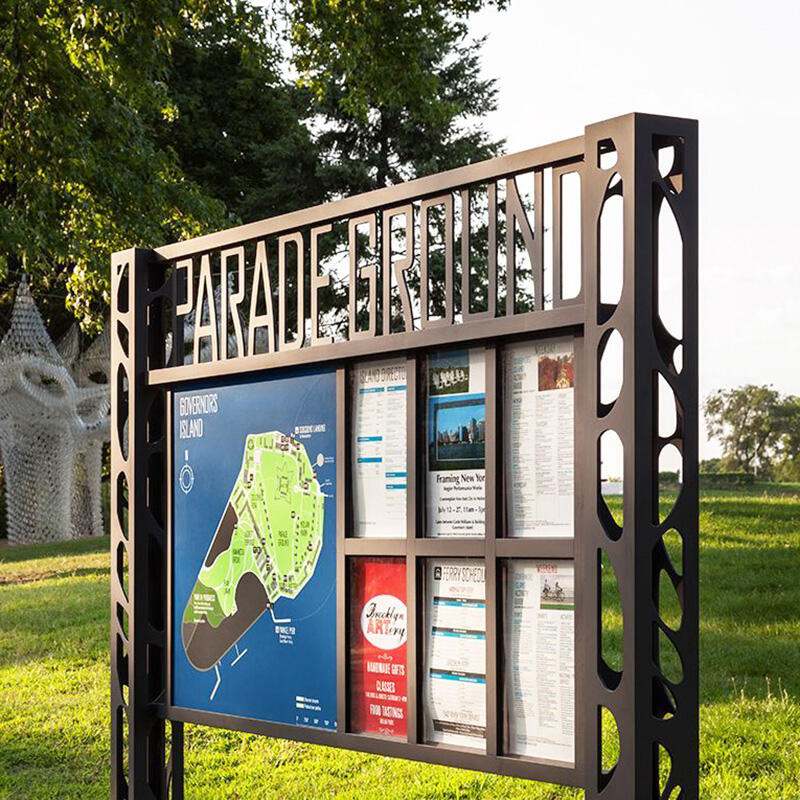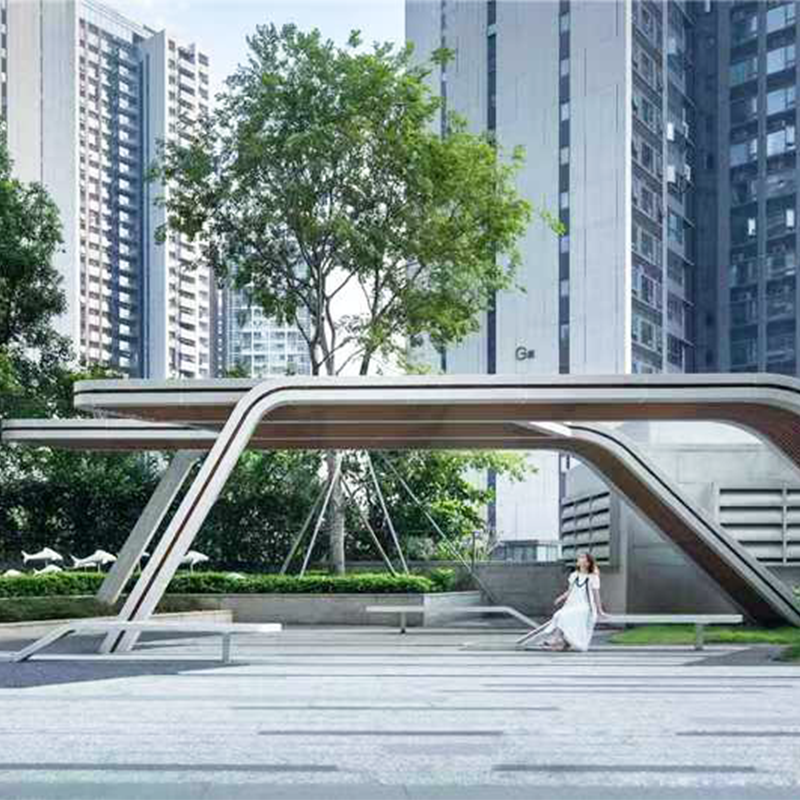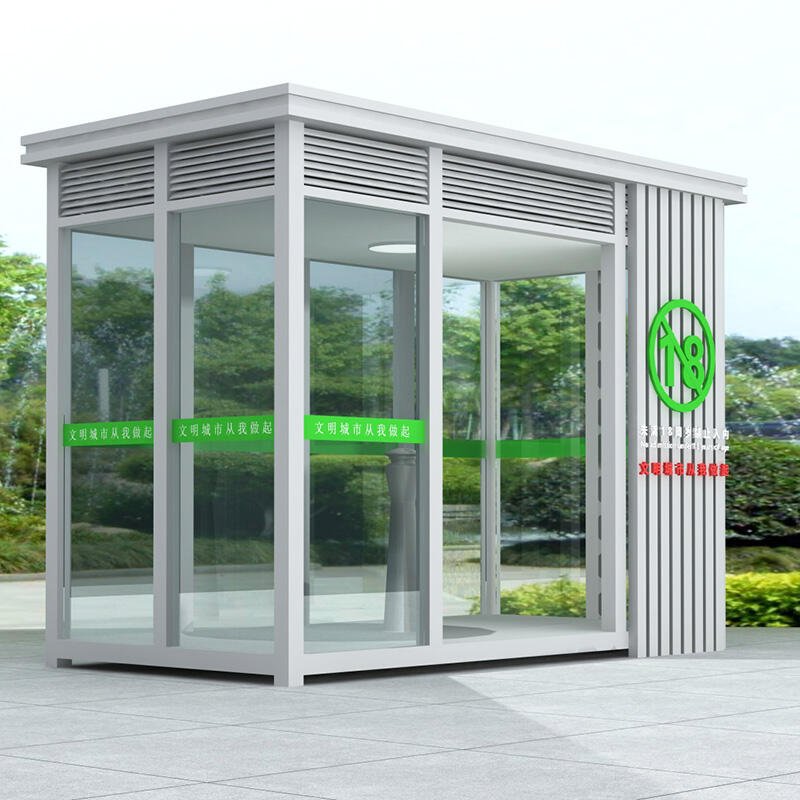Key Principles of Sustainable Bus Shelter Design
Energy Efficiency Through Smart Material Choices
In sustainable bus shelter design, selecting eco-friendly materials plays a crucial role in reducing the energy footprint. By opting for materials that possess insulating properties, shelters can maintain a stable internal temperature, thereby cutting down on the need for heating and cooling systems. For instance, materials such as high-performance glass and thermal composites are known to enhance energy efficiency significantly. A study by the U.S. Green Building Council demonstrated that thoughtful material selection could lead to energy savings of up to 30%, showcasing the impact of smart material choices on energy conservation in public transit infrastructure.
Integration with Public Facilities and Urban Landscapes
Harmonizing bus shelter designs with existing public facilities and urban landscapes is vital for an integrated transit experience. By aligning with surrounding infrastructure like benches, bike racks, and advertising signs, shelters can enhance both functionality and aesthetic value, enriching the urban environment. Examples of this are seen in cities where bus shelters seamlessly blend with parks, pavilions, and plazas, creating cohesive spaces that serve multiple purposes. Urban planning guidelines often advocate for such integration, emphasizing the need for transit facilities to coexist symbiotically with public areas, thereby contributing to a more comprehensive urban landscape.
Water Conservation Strategies in Shelter Construction
Water conservation is an essential aspect of sustainable shelter construction. Technologies that capture and utilize rainwater can be implemented for shelter maintenance and surrounding landscaping, reducing reliance on municipal water supplies. Moreover, the use of permeable materials in shelter design assists in effective stormwater management, minimizing surface runoff and aiding in urban water control. Environmental studies in urban settings substantiate these strategies, revealing that incorporating rainwater harvesting and permeable surfaces can lead to significant water savings, thereby supporting urban sustainability goals. Such implementations ensure that bus shelters don't just serve transportation needs but also contribute positively to environmental conservation efforts.
These principles collectively emphasize the importance of designing bus shelters that are not only efficient and functional but also environmentally sustainable, serving as integral components of urban transit infrastructure.
Innovative Materials for Eco-Friendly Bus Shelters
Recycled Steel and Low-Carbon Concrete Applications
The adoption of recycled steel in bus shelter construction plays a pivotal role in reducing carbon emissions. By recycling steel, we lower the demand for newly produced steel, which is typically carbon-intensive, thus helping mitigate environmental impacts. In addition to recycled steel, there's a growing trend of utilizing low-carbon concrete. Innovations in this field have led to materials that offer enhanced sustainability and longevity, crucial for public infrastructure. Such materials decrease resource consumption significantly. For example, according to recent studies, using recycled materials overall can reduce resource consumption by up to 60%. This shift not only supports eco-friendly cities but also ensures robust and enduring shelters.
Sustainable Timber and Bamboo for Aesthetic Pavilions
In crafting visually appealing and structurally sound bus shelters, sustainable timber and bamboo are exceptional choices. These materials are not only aesthetically pleasing but also provide structural integrity. The use of sustainably sourced timber and bamboo offers dual benefits: they create inviting and warm environments while ensuring reduced environmental impact. Notable examples include shelters that seamlessly blend with their surroundings yet stand out for their ecological consciousness. Certification from organizations like the Forest Stewardship Council adds credibility to these sustainable choices, ensuring they meet stringent environmental standards. Ultimately, shelters designed with such materials embody both elegance and responsibility toward nature.
Graffiti-Resistant and Low-Maintenance Finishes
Utilizing graffiti-resistant coatings for bus shelters is an effective measure to combat vandalism and reduce maintenance efforts. These specialized finishes not only protect against defacement but also mitigate environmental wear, prolonging the shelters' lifespan. This approach proves cost-effective for municipalities as the reduced need for frequent repairs leads to lower lifecycle costs. For instance, municipalities that have implemented these innovative finishes report a notable decrease in maintenance expenses. Supporting case studies highlight the success of such installations, showcasing the long-term economic benefits and enhanced durability offered by these low-maintenance solutions. This ensures public infrastructure remains functional and aesthetically pleasing with minimal upkeep.
Renewable Energy Integration in Transit Infrastructure
Solar-Powered Lighting and Digital Advertising Signs
Solar-powered lighting offers a compelling solution for energy independence and significant cost savings in transit infrastructure. By harnessing the sun's energy, these systems minimize reliance on traditional power sources, leading to a cleaner and more sustainable environment. Digital advertising signs, powered by solar energy, not only provide essential information to passengers but also create revenue streams through advertising. For instance, a study by the National Renewable Energy Laboratory found that solar technologies are increasingly popular in public transit systems, yielding up to 20% savings in energy costs and reducing carbon footprints.
Wind Energy Harvesting Through Turbine-Enhanced Shelters
The integration of small wind turbines atop bus shelters represents an innovative approach to generating clean energy within urban environments. These turbine-enhanced shelters capture wind energy, transforming it into electricity that can power digital displays, lighting, and other amenities. Projects in Worcester, UK, have demonstrated the viability of these systems, effectively offsetting energy use with their wind energy output. Data from existing projects indicate that such integrations can generate substantial energy, sufficient to power several transit facilities, highlighting their efficiency and practicality in urban settings.
Kinetic Energy Recovery from Public Transportation Systems
Kinetic energy recovery systems are transforming how urban transit can harness the energy produced by both buses and passenger movements. By capturing this kinetic energy, transit shelters can generate electricity for essential services within the infrastructure. Existing technologies, such as the regenerative braking systems used in some buses, effectively recover energy that would otherwise be lost. Experts predict that these systems have the potential to significantly enhance the energy efficiency of public transportation, making urban mobility more sustainable in the future.
Case Studies in Sustainable Shelter Implementation
Phoenix's Sundial-Inspired Shade Solutions
Phoenix has creatively embraced sustainability and aesthetics by implementing a sundial-inspired design for its bus shelters. This unique approach not only enhances the visual appeal but also serves a functional purpose by maximizing shade throughout the day. The project integrated local materials, reducing environmental impact and promoting energy savings. User satisfaction metrics have shown positive feedback from community members who appreciate the improved comfort and design. The environmental impact has also been significant, with reductions in energy consumption contributing to a more sustainable urban environment.
Worcester's Net-Zero Smart Shelter Network
Worcester has pioneered an innovative network of bus shelters that are energy self-sufficient, embodying the principles of net-zero energy design. By leveraging cutting-edge technologies such as solar panels and energy-efficient materials, these shelters have enhanced community engagement and improved transit efficiency. Performance data since their implementation indicates a significant reduction in energy costs and a marked improvement in public transit usage. This success underscores Worcester's commitment to sustainability and demonstrates the tangible benefits of smart urban design.
LEED Gold Certified Transit Hubs in Urban Centers
LEED Gold certification serves as a benchmark for sustainable architecture, and several transit hubs in urban centers have distinguished themselves by achieving this standard. LEED (Leadership in Energy and Environmental Design) evaluations focus on aspects such as sustainable site development, energy efficiency, and water conservation. Case studies of transit hubs that attained LEED Gold status reveal measures like low-flow plumbing fixtures achieving a 36% reduction in water use and energy-efficient systems cutting energy costs by 26%. These successes highlight the broader environmental benefits and economic savings associated with green building practices in civic infrastructure.
Multi-Functional Design for Urban Sustainability
Green Roofs and Vertical Gardens for Air Quality
Utilizing green roofs and vertical gardens in urban shelter designs can significantly improve air quality. These sustainable features act as natural air filters by capturing pollutants and producing oxygen, enhancing biodiversity and offering urban cooling benefits. For example, the Bosco Verticale in Milan demonstrates how integrating such green elements within urban structures can effectively combat pollution and support diverse ecosystems. A study published in Environmental Pollution shows green roofs can reduce airborne particulates by up to 30%, validating their positive impact on air quality. Furthermore, these installations help reduce the urban heat island effect, offering a cooler and more pleasant environment for city dwellers.
Interactive Digital Displays with Real-Time Transit Data
Interactive digital displays offering real-time transit data enhance user experience by providing immediate and relevant information. These displays allow commuters to access the latest updates on bus schedules, reducing wait times and improving the overall efficiency of public transportation. Cities like New York have successfully integrated these displays, leading to increased commuter satisfaction and reduced complaints. According to statistics from TransitApp, systems using real-time data see a 20% improvement in user engagement and a 15% increase in efficiency, showcasing the technology's positive impact on the transit ecosystem.
ADA-Compliant Layouts for Inclusive Public Spaces
Designing bus shelters with ADA-compliant layouts ensures accessibility for all, including individuals with disabilities. This thoughtful design approach involves adhering to guidelines such as providing sufficient clearance space and tactile warning features, which greatly enhance usability. Successful projects, such as the inclusive transit hub in Portland, underscore the benefits of ADA compliance in fostering a more accommodating public space. Case studies demonstrate that when public facilities are accessible, there is a noticeable increase in community use and satisfaction. A report by the National Institute on Disability indicates a 25% boost in user satisfaction when ADA standards are implemented, emphasizing the importance of inclusive design.










